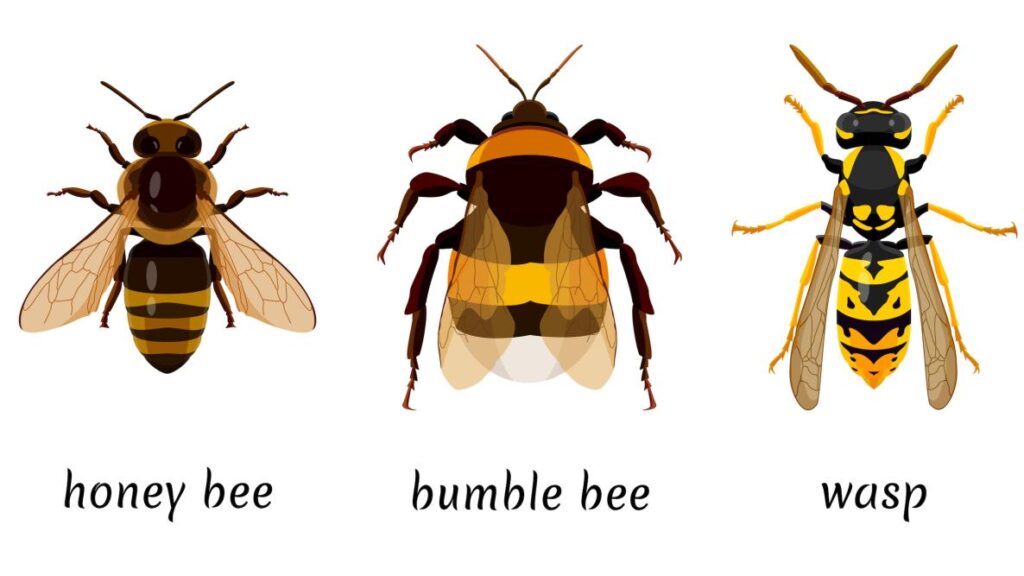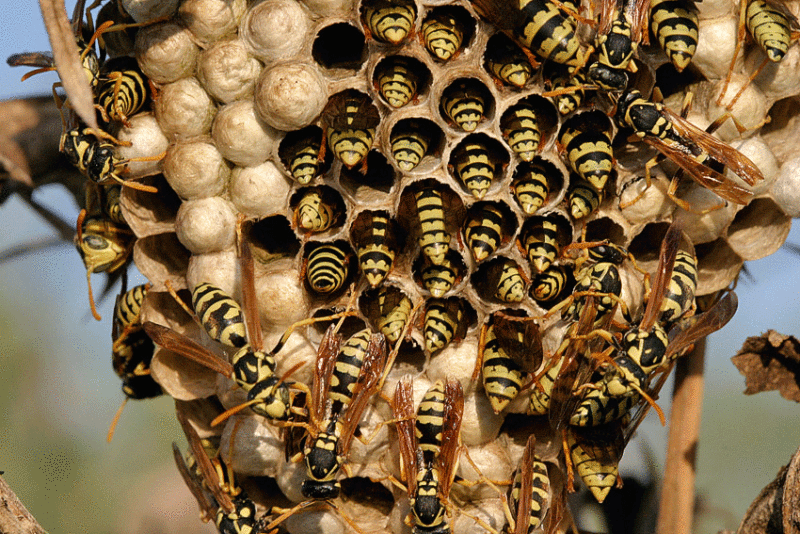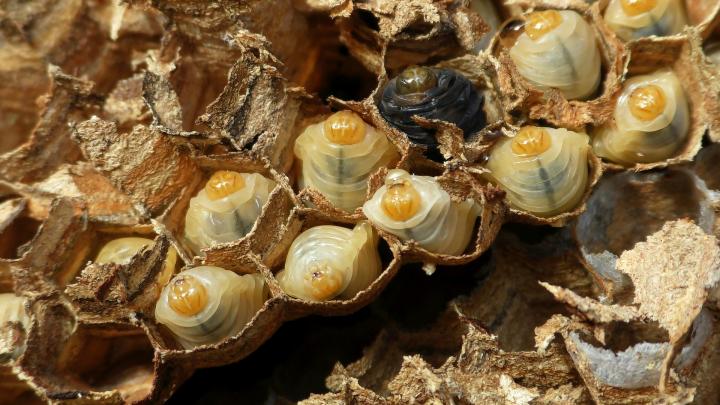All bees are not created equal, and understanding the differences between bees, wasps, and hornets is key when considering bees removal. While these insects may look similar and belong to the same order, Hymenoptera, they each have unique traits that set them apart. How can you identify whether you’re dealing with a bee, wasp, or hornet before planning a removal strategy? Let’s take a closer look!
Bees and wasps took separate evolutionary paths over 100,000,000 years ago. Bees are vegetarians, collecting pollen to feed their young, while wasps and hornets are carnivores, feeding on other insects. The main thing they have in common is that only females can sting.

What’s the Difference Between Wasps, Bees, and Hornets?
Hornets
All hornets are wasps, but not all wasps are hornets. In the U.S., we have no native hornets. Our main hornet is the European hornet which was introduced into New York in 1840. It looks like a large yellowjacket—about ¾ to 1½ inches long—and nests in the ground or hollow trees.

Wasps
While there are many solitary wasps, such as digger wasps and mud daubers, most wasps are social insects that live in colonies with a queen, female worker wasps, and drones, much like honeybees. Solitary wasps typically nest in the ground or natural cavities. In contrast, social wasps build papery nests made from chewed fibers, often attaching them to tree limbs or the eaves of your house. If you’re dealing with these pests, understanding their nesting habits is essential for effective wasps removal.

Bees
Bees eat pollen and nectar, feeding it to their young. This makes them important pollinators. Bees look furry because they are covered with branched, feather-like hairs that pollen clings onto. Bees are not aggressive and only sting in self-defense. The male bees have no stinger. Except for honey bees and bumblebees, most bees are solitary and live in underground nests. Each female takes care of her eggs and gathers pollen to feed the larvae when they hatch. There are about 4,000 species of bees native to Canada.

Identifying at a Glance
- Bees have a wide, hairy body, stout legs, and lose their stinger when they sting.
- Wasps and hornets have skinny bodies with narrow waists. Their bodies are mostly hairless and can sting multiple times.
Of course, there are many kinds of bees. Most of us grew up learning about the sophisticated social structures of honey bees and bumblebees, and we’ve come to think that their lifestyle represents all bee behavior. The truth is that the world is home to more than 20,000 species of bees, and a whopping 90% of them do not live together in hives.
Our native solitary bees—such as mason bees and leafcutter bees—are most vital to our flowers and food.

Life Cycle
Whether bee, wasp, or hornet, the basic life cycle is the same—egg, larva, pre-pupa, pupa, adult. Fertilized eggs produce female bees, while unfertilized ones produce males. Eggs are placed in individual nest cells and provisioned with a food source for the newly hatched larvae to eat—a loaf made of pollen and nectar for bees or a paralyzed insect for wasps.
Some eggs hatch in a few days, while others wait until the next season to emerge. The larvae eat, grow, and molt their skin up to 5 times. The pre-pupal stage can last a long time. An egg laid in the spring can take all summer to reach the pre-pupal stage, and then it can stay that way all fall and winter. Some bees remain pre-pupal for several years! The pupa looks like an adult but is pale in color with no wings or hair. In a short time, it chews its way out of the nest as an adult.
or ground-nesting wasps and hornets, locate the entrance hole, spray into the opening, and plug the hole with a large rock. Don’t try to burn or drown a nest with water. That just makes them mad! When attempting any eradication of nests, be sure to dress appropriately, covering your eyes and all bare skin (just in case). Also, be sure to have an escape route planned!
At Quality Affordable Pest Control, we offer professional pest control services to help you get rid of wasps in your home. Our team of experts uses safe and effective methods to remove wasp hornets and bees to prevent future infestations. Contact us today to schedule an appointment and keep your home safe from wasps. Call us at 647-502-3950 to get a free quote immediately.

